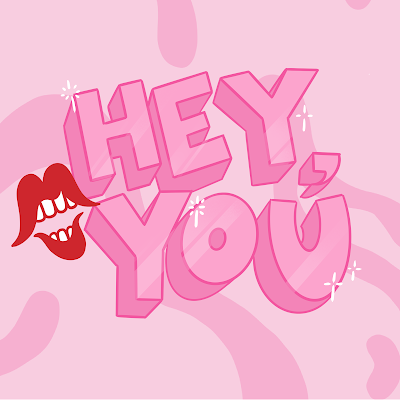Production Paperwork
 |
| A still taken from my sizzle reel |
Prior to the commissioned pitch, we all had to create a pitch of our own that showcased our idea to a panel. For this pitch, I made multiple videos and assets, including a website, for the panel to review.
 |
| The one-pager for my pitch |
 |
| A Social Media asset that I created for casting purposes. |
Graphic design Assets
Throughout the unit, I created many Graphic Design assets including posts for social media, posters for set-dressing, the set design, the illustrated and animated stings and a full, 22-page Style Bible. Overall, I created 87 individual assets (Many of which were not used!) and spent in excess of 40 hours creating all the visual components for the show- the ice cubes for the 'Hot or Not' sting was an accumulated 5 hours alone for a 5-second sting.
 |
| Poster designs for set dressing. |
Style Bible
The Style Bible was made to encapsulate my Directorial vision and the aesthetic of the show and to guide anyone involved in the creation of graphic elements including Lower Thirds, Logo design and Credits.
You can view the full Style Bible here.
Set Design
 |
| The submitted draft for our Set. |
 |
| Draft drawing for Potty Mouth prop |
Casting
 |
| A handful of performers for the role of 'Billy the Bouncer' |
 |
| A handful of performers for the Female Presenter role. |
 |
| Our Audition Feedback form |
DIRECTING
I worked closely with the Producers to make changes to the script in order to try and best enhance the show. We needed certain allowances between segments for Camera and Cast repo's and Props to be added and removed. It was also important that segments were clearly highlighted on introduction to the segment, and upon leaving them.
Our script ended up being really comprehensive, and because of this, my job as Director much easier to follow. I would go through my script on each run-through, highlighting essential calls at key moments.
You can see a copy of our script here.
Here's a diagram of our final camera positions for each segment. Each camera had three positions for the live show, 2 Cameras were cross-shooting each presenter, and a third Camera (3) on a track offered a wide of each section of the set.





Comments
Post a Comment